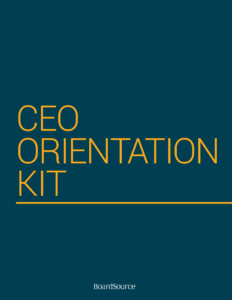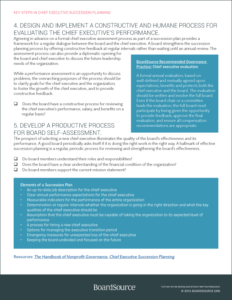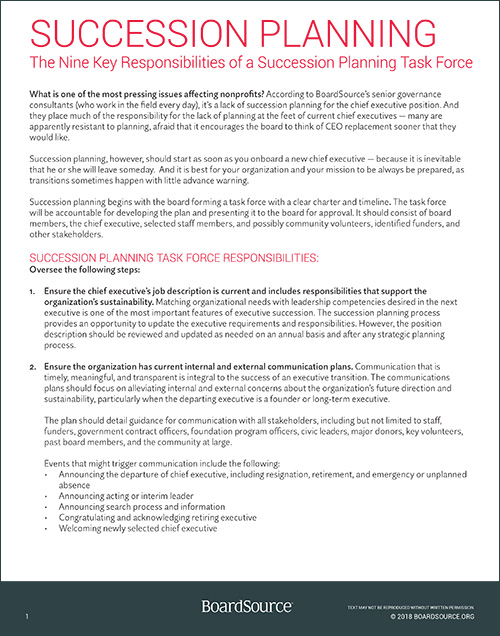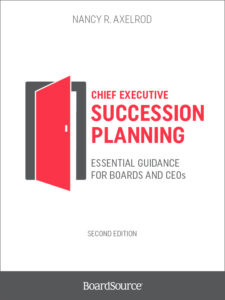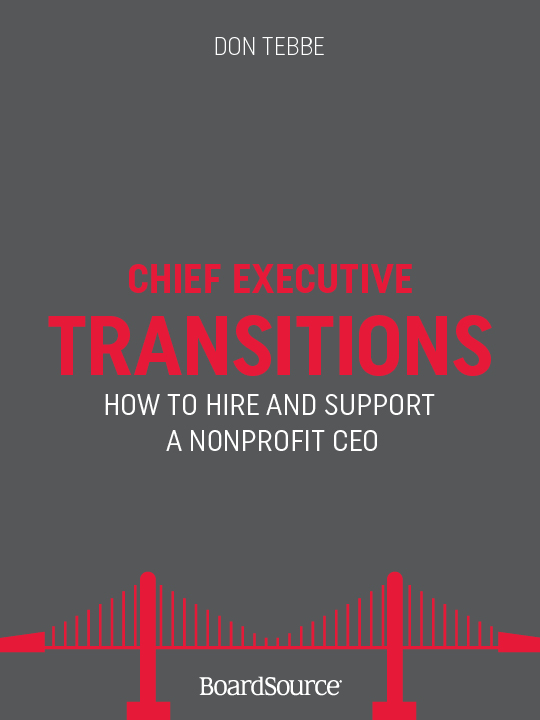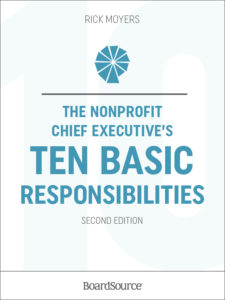Executive Transition and Succession Planning
Hiring and supporting the chief executive is among the most crucial responsibilities of a nonprofit board.
Change at the executive level — whether planned or abrupt — requires the board to provide strong leadership and direction as they contemplate what the organization needs from its next leader. With advanced notification of change comes opportunities for nonprofit boards to prepare a succession plan which can alleviate much of the tension that comes with executive transition. Tactical transition planning in the absence of a formal succession plan will ensure the board selects the right next leader to meet the organization’s current challenges and embrace its opportunities!
What Is Executive Transition?
The departure of an executive and the recruitment, hiring, and installation of a new executive – is a complicated process that typically requires months of work, possibly longer. The work is critical to ensure you are hiring the right leader that can take your organization forward to not only meet its mission and execute its strategic vision but also enhance its culture and deepen its impact. Boards that plan for the succession of the CEO, and other key staff as necessary, can lessen the impact of such a transition by thinking through their desired course of action to be prepared for a planned or emergency transition. This process is known as succession planning.
While only 27 percent of all organizations report that they have a written executive succession plan, mapping out succession for your executive leader is an excellent opportunity to fulfill the board’s role of providing oversight so they may be prepared in the event that the chief executive departs, abruptly or intentionally. The practice of succession planning ensures that the executive transition isn’t unnecessarily drawn out by a lack of clarity about the process and initial steps, negatively impacting the organization.
Opportunities Amidst Transition
A nonprofit’s leader guides the execution of the strategic vision for the organization. Periods of executive transition open up opportunities to think differently. During a transition, there are opportunities to recruit a new leader who will bring innovative strategies, a fresh perspective, and lived experiences to the table and renew energy and engagement in mission work for internal and external stakeholders.
Exploring a Merger
An often ignored opportunity during transition lies in mergers. While merging organizations may not be the path for every organization facing an executive transition, our board openness survey suggests that boards may be more willing to explore this conversation. A study of success factors of nonprofit mergers reveals that, for 80 percent of the mergers studied, an executive director had recently left or was soon to retire in one of the pre-merger organizations. Learn more about the Power of Possibilities and see if a strategic alliance or restructuring makes sense for your organization.
Communicating the Transition Process + Clarifying Expectations
The board plays a crucial role in times of transition, including communicating changes and ensuring the new leader is set up for success. Communicating clearly, concisely, and as transparently as possible can dispel any confusion or fear that may occur in the midst of change from internal teams or external stakeholders.
Creating an Executive Transition Plan for Success
There is no sure formula to guarantee a smooth transition – but, there are common considerations to keep in mind and questions to ask that could make your transition process easier and more successful.
Using a Checklist
Transitions are a process. Begin by creating a checklist for the entire transition process. Once your current executive announces their departure, until the onboarding of the new CEO, a checklist can guide the board and staff as to what needs to be communicated when, to whom, and by whom.
There can be many parties involved, including a transition committee, search firm, board, and staff. The executive leader is included in succession planning but BoardSource does not recommend the outgoing CEO be included in the hiring of the new CEO. It is squarely the role of the board to determine what the organization needs in a new leader, who shall serve on the search committee and in what capacity. It is also important to determine how the committee will communicate with those who have not been included in the search process. Having a checklist ensures there is an intentional process which can provide clarity for board members and nonprofit employees during the transition.
Below are considerations to discuss for creating your transition plan prior to announcing an executive’s planned or abrupt departure.
- Consider if it is time for a merger. If so, find more guidance on the Power of Possibility campaign.
- Decide what funders and community leaders need to be contacted immediately
- Determine how the board will communicate with the nonprofit staff
- If the CEO’s departure was abrupt, discuss who will lead in the interim
- Conduct an organizational assessment to determine the leadership skills and experience the next chief executive will need to possess.
- Appoint a diverse search or transition committee
- Determine a search process that will recruit a diverse pool of candidates
- Confirm the salary is in line with other executive leaders of like-sized organizations in your ecosystem (If you have had a long-serving executive, it may not be.)
- If you will be hiring a firm, as recommended in Avoiding the Glass Cliff: Advice to Boards on Preparing for and Supporting a New Leader of Color, select a search firm that prioritizes racial equity in its search practices.
- Determine an onboarding process and appoint a board member to introduce your new leader to the community, as necessary.
Supporting New Leadership
Onboarding is an essential part of cultivating a truly effective team. Develop a comprehensive process for incoming executive leaders. Determine the role of a transition committee after the new executive is hired. Having the information your new leader needs helps them understand the culture, programs and processes of your nonprofit and the full responsibilities of their role. Evaluate what resources and additional support your organization has in place to set the incoming leader up for success. Professional development, coaching, and other training may be helpful to onboard a new leader.
Hiring and Supporting the First Leader of Color
If your organization will be hiring the first leader of color, here are a few important considerations to include in your process, also from Avoiding the Glass Cliff: Advice to Boards on Preparing for and Supporting a New Leader of Color:
- Build diversity, equity, and inclusion into the board and staff culture prior to the hire, as necessary
- Raise and allocate funds to support the leader’s first year onboard
- Prepare the organization for a new leader
- Be honest with candidates about your organization’s current financial and reputational state as well as the state of internal dynamics and culture
- Consider providing an employment contract
An executive transition, and all the change that brings, can be overwhelming, but with the right plan in place, your nonprofit can complete this process with intentionality, clarity and care. An intentional plan will reduce uncertainty and ensure a fair and equitable process is followed.
The resources below can help your board establish a leadership succession plan, understand the phases of an executive transition, and lead the organization to its next stage of leadership.
Quick Access:
Visual & Written Info
Guides, tools, templates, and infographics
Publications: books and toolkits
Written resources: 101, 201, and 301-level
Sign-up to receive our communications; we’re always adding new resources and will send them to you directly.
Guides, Tools, Templates, and Infographics

The Power of Possibility campaign resource: Using the moment of an executive transition to consider a strategic partnership.
CEO Orientation Kit
Members-only
Key Steps in Executive Succession Planning
Members-only
Tips on How to Avoid or Transcend Founder’s Syndrome
Members-only



